Oct 112012
A visit to the Salt Pans near Tal Chapar Wild Life Sanctuary
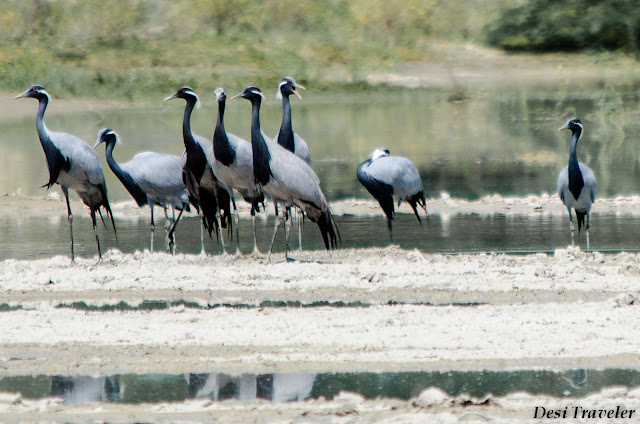 Migratory Demoiselle cranes in salt pans of Tal Chapar Rajasthan |
Q: what is common between Mahatma Gandhi, Roman Soldiers, Timbuktu, Tal Chapar and Angelina Jolie?
Well you guessed it right it is Salt. I know the title of the post is a give away.
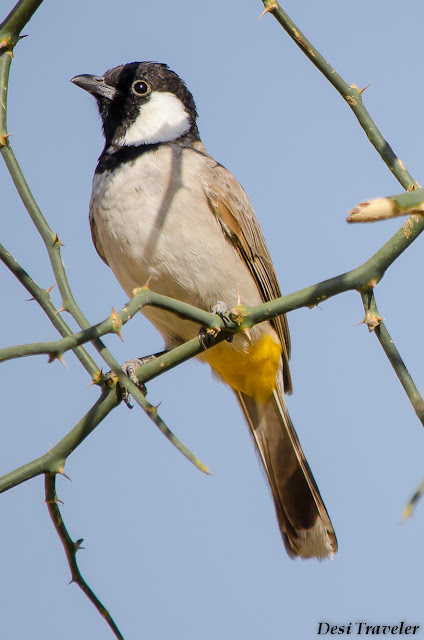 |
| White Eared Bulbul |
Gandhijee had a close relationship with Salt production in India as he led the march to Dandi in the cost of Gujarat to protest against the salt monopoly and excessive tax by the colonial masters in India. That march on March 10, 1930 changed the course of Independence struggle of India. But this march against salt tax is not the first case of protest where salt is a central character. History of third rock is sprinkled with salt wars in almost all the ages.
Salt has been a bone of contention between various empires from time immemorial. Salt was one of the first commodities to be traded and was so precious that Roman soldiers were paid in salt grains. The good ones being called worth their weight in salt! Salt producers from central Africa in places that you will struggle to find on an Atlas (read Timbuktu) have carried the precious commodity on camel back to take for trade to distant places as far as Egypt, to be further shipped to Arabia and Central Asia.
Any ways I digress again, after the Dandi march in March of 1930, there was a movement to produce salt in India and various places adapted the practice. While the salt production along the costal India is well known, not much is written about salt production in Rajasthan. Tal Chhapar is one such place where salt is produced from brine. This is the same method salt producers in Mali central Africa have been using for centuries. I was not able to get much information since when salt is being produced in Chhapar but was able to take some pictures, during our recent visit with Darter for bird watching to Tal Chhapar.
Lesser known than the more famous Sambhar salt works the salt produced in Tal Chapar is of good quality and produced from an age old method even today. The water in the area is so salty that the salt producers simply bring it up with help of bore wells (earlier they did it manually), spread it in salt pans and let it dry. Some of the water seeps back into the soil and the rest just evaporates in sun hotter than Angelina Jolie who also played the title character Salt in one of her movies.Q.. Why was she not called say Pepper, or Cumin, or basil ? Simply because only salt gives taste to the food that only salt can give Just imagine Angelina Jolie being called basil, or cumin. You get the point I hope?
What also helps is that the area gets scanty rainfall of only 300 mm per annum thus the salt pans do not get washed away in rain. Once the water evaporates the salt is collected and small mounds are formed on the banks of the fields before it is transported to factories for cleaning, iodizing and packing. Now since salt is not eaten by wild animals or cattle there is minimum supervision required in the fields except for periodically coming and ensuring that the small bunds are not broken and water does not flow from one stage of production to another. A farmer will typically have his field divided into 4 sections and as the water keeps on evaporating from the first section he will collect the salt and add more water. The rate of evaporation of water is directly proportional to the hotness of Angelina Jolie, oh I mean sun.
Now normally you will associate these salt pans as devoid of life, but that is not the case. Since there is a lot of water in the fields a lot of insects are attracted to them and to eat those insects and weeds growing around the fields a lot of migratory and indigenous birds come and stay there. We noticed a huge flock of Demoiselle cranes (Anthropoides Virgo) blissfully enjoying the food offered by salt panes.
Demoiselle cranes come to India for wintering from central Asia as far as Mongolia and have a special place in Indian poetry being compared with a beautiful girl somebody like Ms. Salt( here we go again). They are called kraunch (how like Crane!) in Sanskrit and are normally believed to be the bird that was responsible for Balmiki becoming a sage from a dacoit, who after change of heart went on to compose Ramayana the most revered of Indian epic mythological book.
Other birds observed near salt panes were sandpiper, white cheeked bulbul, Tawny eagle, crested lark, common egret, and a solitary flamingo, which must be really unpopular in his group to be abandoned by others or he could be the scout who came first to look for safer grounds. Take your pick.
The highlight of this visit to the salt pans was an abandoned well that has been adapted by common pigeons to make a nesting ground, safe from cats and foxes around. The salt pans are a good source of income for the locals in an area where normal cultivation is not easy due to scanty rainfall but the flip side is that they are depleting the water table of the area due to which the sanctuary becomes dry much earlier than it would if all the water is not taken out. Another example of man and nature conflict, I have no solution for the same at this stage besides acknowledging that this problem one keeps on encountering almost everywhere one visit.
I hope you liked reading this. Do subscribe to the desi Traveler and like our Facebook page by clicking here.
Other posts in This series 1. Train To Rajasthan
More to come, please feel free to subscribe and share with your friends.
16 Responses to “Salt Pans of Tal Chapar Rajasthan”
Comments (16)
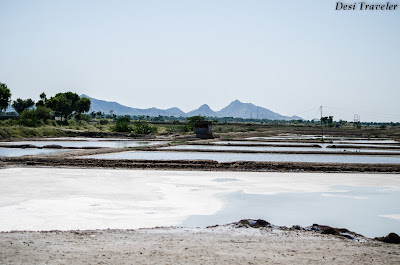
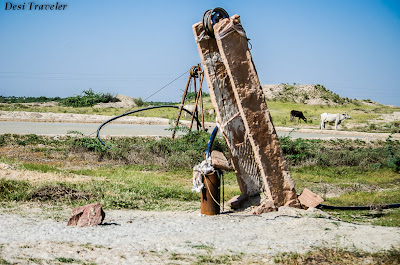
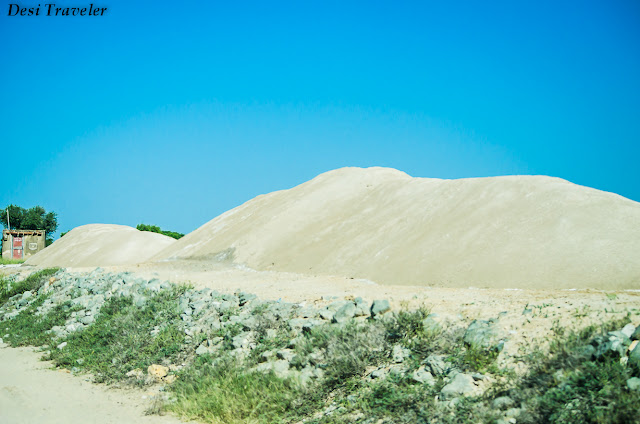
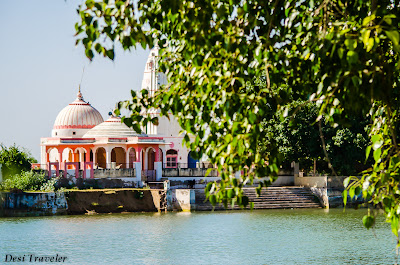


Really informative. Great initiative on your part to post these fantastic photos. Just let me know: If I want to stay on a salt pan site for a month, what care should be taken prior to doing so and how can I procure the daily requirements like food?
Hi James…. In India every thing co exists with every thing else. So these salt pans are only half an hour drive from the Tal Chapar guest house, you don’t actually have to camp there. You can if you want to but you will still be within driving distance of hotels, etc.
thanks
Lovely, detailed posts…..and lovely pics….
Thanks Santhosh….
Uff !! brilliant pics … and even better travelogue
Thanks Sangeeta… that Uff… says a lot.. best comment on my blog till date..
Wonderfully informative with nice images.
Thanks Rajesh… working on the next in series.. thanks..
Gorgeous…especially the last shot with kinfishers(?)nest inside the well…Lovely travelogue!!
Thansk Panchali… the birds inside the well are common rock pigeons that you c in cities..
amazing captures 🙂 🙂
Interesting post. Nice clicks.
http://www.rajniranjandas.blogspot.in
That was an interesting read with good photographs.
thanks ilakshee, glad that u liked it.. do visit again.
Awesome pics! Great post, Prasad! Thank you:)
thanks Amitjee. and many thanks for being a regular reader of my posts..